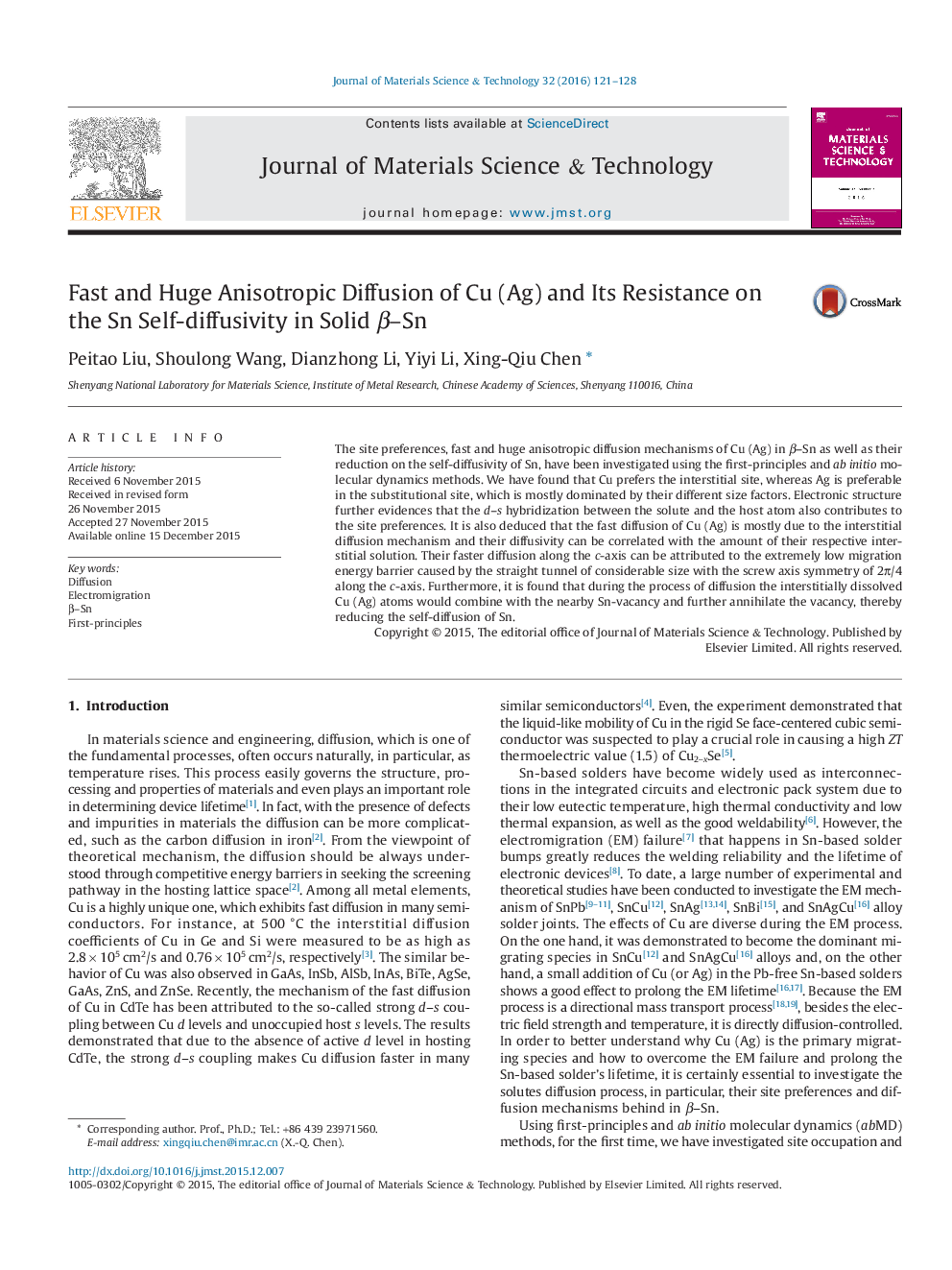| Article ID | Journal | Published Year | Pages | File Type |
|---|---|---|---|---|
| 1555904 | Journal of Materials Science & Technology | 2016 | 8 Pages |
The site preferences, fast and huge anisotropic diffusion mechanisms of Cu (Ag) in β–Sn as well as their reduction on the self-diffusivity of Sn, have been investigated using the first-principles and ab initio molecular dynamics methods. We have found that Cu prefers the interstitial site, whereas Ag is preferable in the substitutional site, which is mostly dominated by their different size factors. Electronic structure further evidences that the d–s hybridization between the solute and the host atom also contributes to the site preferences. It is also deduced that the fast diffusion of Cu (Ag) is mostly due to the interstitial diffusion mechanism and their diffusivity can be correlated with the amount of their respective interstitial solution. Their faster diffusion along the c-axis can be attributed to the extremely low migration energy barrier caused by the straight tunnel of considerable size with the screw axis symmetry of 2π/4 along the c-axis. Furthermore, it is found that during the process of diffusion the interstitially dissolved Cu (Ag) atoms would combine with the nearby Sn-vacancy and further annihilate the vacancy, thereby reducing the self-diffusion of Sn.
